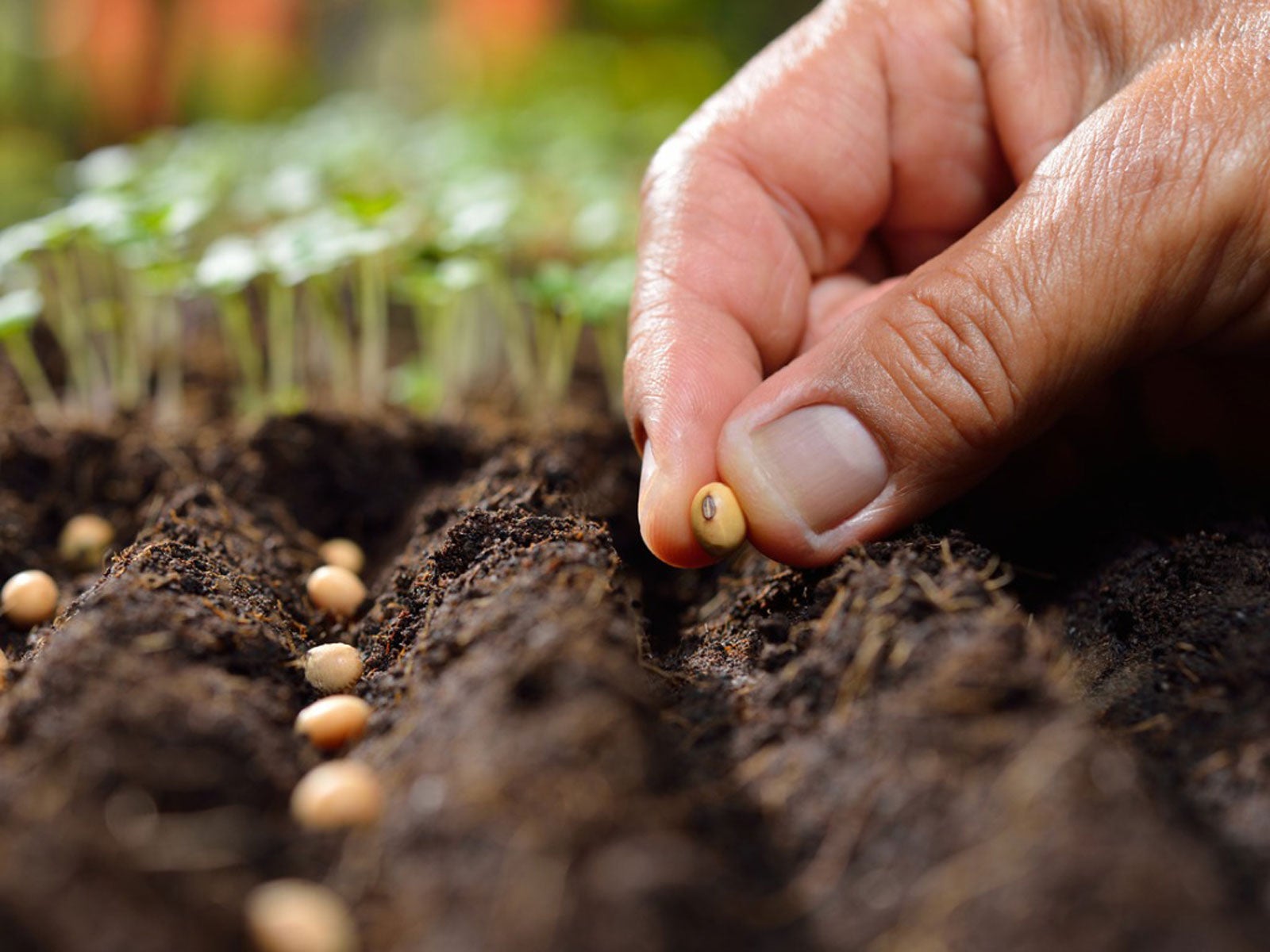Vegetable Seed Growing – Planting Freshly Harvested Seeds From Veggies


Frugal gardeners know that seed saving not only preserves a favorite crop variety but is an inexpensive way to have seed for the next season. Is planting freshly harvested seeds a viable way to re-crop though? Every seed group is different, with some requiring stratification while others need special treatment, like scarification.
Harvesting and planting seeds from your vegetable crops usually works, but you need to know which ones don't need unique treatments for ultimate success.
Tips on Vegetable Seed Growing
Vegetable growers often save seed from their crops, especially when they have grown a desired species. Can you plant fresh seeds? Some plants will start just fine from newly harvested seed, while others need several months in a specialized environment to jump-start the embryo.
If you are saving your seeds, you may wonder when you can plant seeds. It is inadvisable to save tomato seed, for instance, without cleaning the pulp away and drying the seed for a period of time. If you don't let them dry, they won't germinate but, instead, tend to just rot in the ground.
However, if you are a cut-and-compost-on-site kind of gardener, you will find your composted tomatoes will readily produce volunteer plants the next season. What makes the difference? Time and maturity are part of the equation but so is the period of cold exposure.
Planting freshly harvested seeds works best on perennial and cold-season vegetables, like cole crops.
When Can You Plant Seeds?
For most gardeners, there is a growing season that stops as soon as temperatures drop. Warm-season gardeners have the potential to grow crops year-round. Yet, planting freshly harvested seeds even in regions where temperatures remain mild is not a great idea.
Gardening tips, videos, info and more delivered right to your inbox!
Sign up for the Gardening Know How newsletter today and receive a free copy of our e-book "How to Grow Delicious Tomatoes".
Seeds need to mature properly, the seed coating needs to dry and cure, and they need a rest period prior to planting. Waiting until seed has cured is the best method of vegetable seed growing. That way you don't have an impermeable seed coat that will not allow water in and will grow foul and rotten before the embryo can germinate.
Harvesting and Planting Seeds
In almost all cases, it is best to prepare your seed prior to planting. Threshing and winnowing removes the extraneous plant matter and leaves just the seed. After that, you may also need to soak the seed to remove any wet vegetative matter.
Once all the wet stuff is gone, spread the seed out and let it dry. This will make the seed stable for storage, but it also prepares the seed to accept moisture and split the husk, allowing the seedling to peep through. The drying process also helps the seed ripen. Once dried, it can be stored or planted if temperatures are cooperative.

Bonnie Grant is a professional landscaper with a Certification in Urban Gardening. She has been gardening and writing for 15 years. A former professional chef, she has a passion for edible landscaping.
-
 Looking For Plants To Give You The Soft And Fuzzies? Try These 5 Fuzzy Leaf Plant Options
Looking For Plants To Give You The Soft And Fuzzies? Try These 5 Fuzzy Leaf Plant OptionsLovers of texture, drama, silver foliage and tactile plants will adore these special sensory garden additions. These fuzzy leaf plant options will leave you all aglow
By Susan Albert
-
 Get Ready For A Summer Of Hummers! Grow These Full Sun Hummingbird Plants and Flowers
Get Ready For A Summer Of Hummers! Grow These Full Sun Hummingbird Plants and FlowersIf you’re lucky enough to enjoy a sunny backyard, make sure you are maxing out on your pollinator opportunities and grow these full sun hummingbird plants and flowers
By Tonya Barnett
-
 How Many Vegetables To Plant Per Person For A Year
How Many Vegetables To Plant Per Person For A YearGauging how much to plant in a vegetable garden can eliminate waste while still producing enough for your family. Click for more.
By Bonnie L. Grant
-
 13 Perennial Fruits And Vegetables You Only Have To Plant Once
13 Perennial Fruits And Vegetables You Only Have To Plant OnceLooking to set it and forget it? Find out which fruits and vegetables can be grown as perennials.
By Laura Miller
-
 11 Edible Plants For A Year-Round Garden In A Bucket
11 Edible Plants For A Year-Round Garden In A BucketWant to know how to grow food inside your house and which foods do best indoors? Click here to learn all about it.
By Bonnie L. Grant
-
 Frost Tolerance Of Vegetables From Least To Most Hardy
Frost Tolerance Of Vegetables From Least To Most HardyHow cold can vegetables tolerate? Knowing which veggies will survive frosts and freezes is essential for the success of your garden. Click here for more.
By Laura Miller
-
 Best Vegetables To Pickle Straight From The Garden
Best Vegetables To Pickle Straight From The GardenPickles aren’t limited to just cucumbers. Read on for tips on pickling your fresh veggies.
By Amy Grant
-
 Benefits Of Planting In Fall Vs. Spring Vegetable Plots
Benefits Of Planting In Fall Vs. Spring Vegetable PlotsLearn why some vegetables do better if you plant them in fall instead of spring.
By Laura Miller
-
 Interplanting Vegetables In The Fall Garden
Interplanting Vegetables In The Fall GardenLearn all about the benefits of interplanting vegetables for your fall garden.
By Laura Miller
-
 Best Vegetables For Growing In Perlite
Best Vegetables For Growing In PerlitePerlite is a natural growing medium that comes from super-heated volcanic glass. In some cases, it works better than soil. Read on for more info.
By Laura Miller